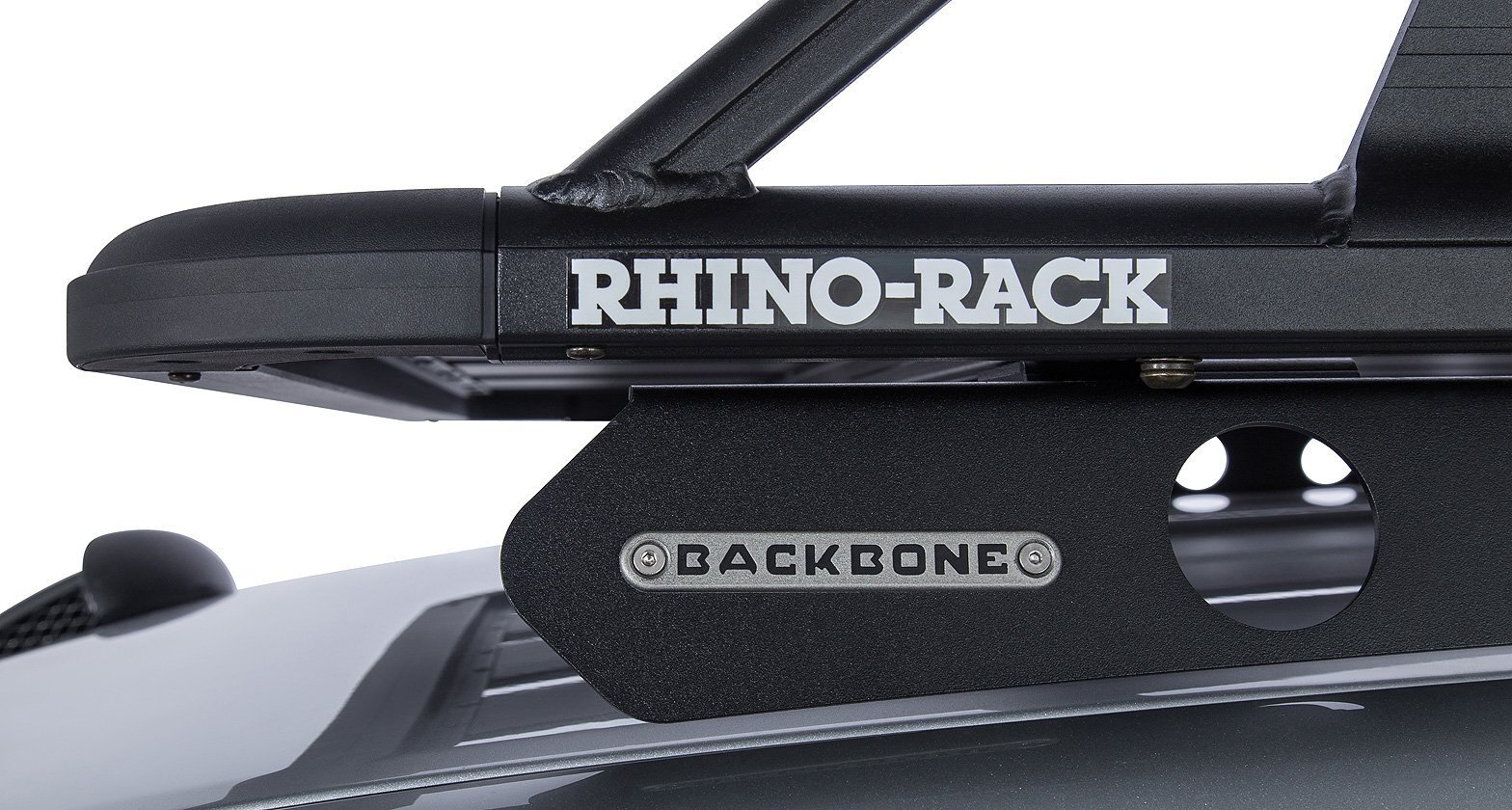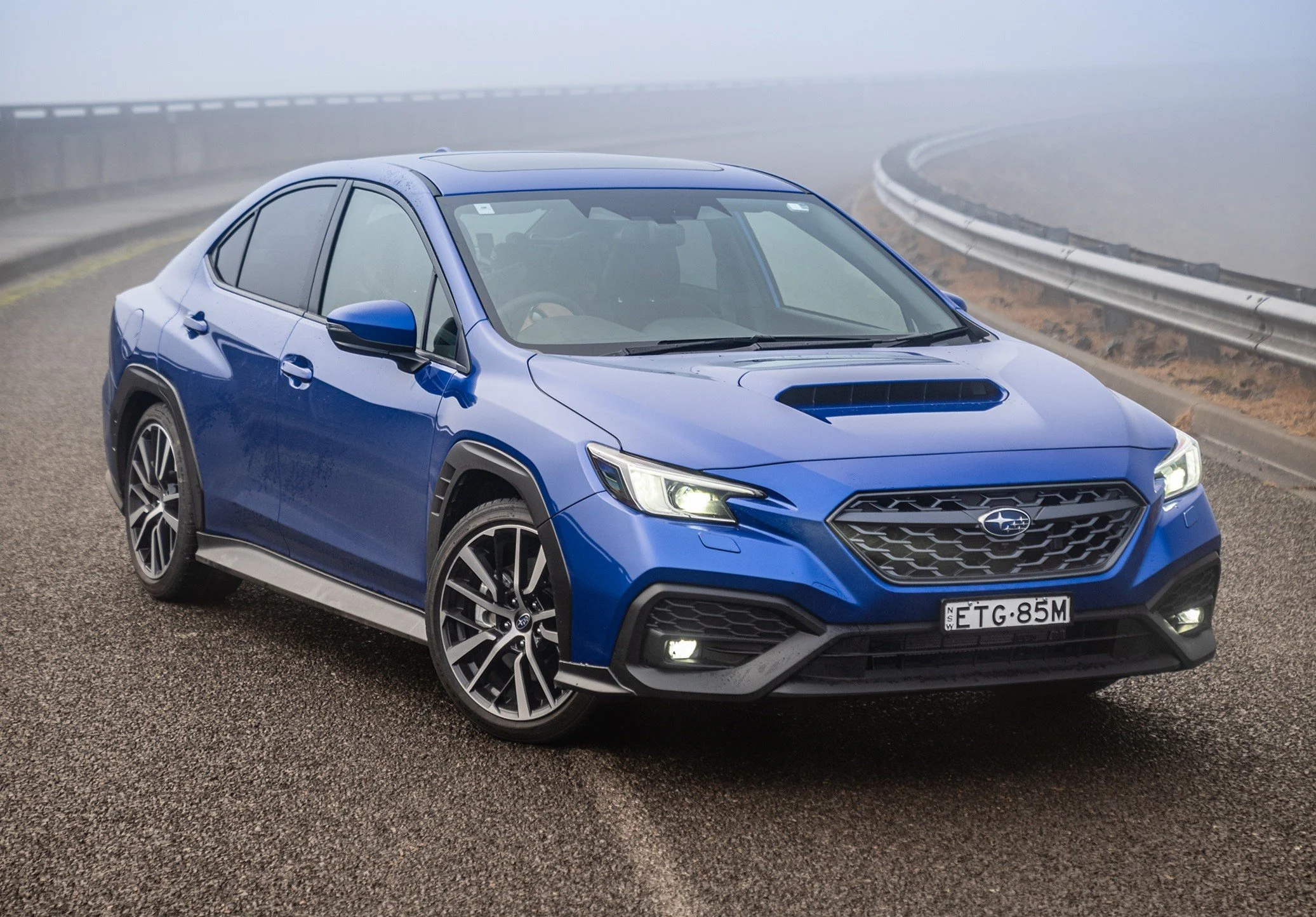Rhino-Rack roof rack: Why I didn't buy one
If you’re thinking about buying a Rhino-Rack for your 4X4, I suggest you don’t. I certainly didn’t, and I was going to. Here’s why…
Unfortunately the 4x4 market industry is even worse than the car industry in terms of being the wild wild west of anti consumer conduct and indefensibly poor design choices.
I very nearly bought one of those sexy flat ‘Pioneer’ Rhino Rocks with the so-called ‘backbone mounting system’.
A very aesthetically pleasing roof rack system I must say. But I sobered up and did the research and quietly decided against it. I thought that would be the end of it, but to me, at the time, it just wasn’t much of a story.
Then, Aussie YouTuber Rhonny Dahl - a pretty good bloke despite spending half his life going to and from Dingo Piss Creek - he went public on this and he’s much more of a diplomat than me. (Admittedly, not that hard)
Another Australian YouTuber Tyler Thompson had his Rhino Rack just fall off one fateful day on Fraser Island. Whoopsie.
Tyler referenced dozens of consumers who had their roof racks fail somewhere on the way to Dingo Piss Creek.
So, I decided this was a potentially serious safety issue and certainly in the public interest. And here we are, talking about it.
And as an engineer, I think about them all the time, and it’s hard not to look at some of the confronting ways they get loaded up, out there on the roads.
Rhino’s racks are certainly sexy enough, but unfortunately I’ve formed the view they’re badly designed.
Roof rack design is, frankly, not that hard. It’s a platform that needs to withstand reasonably foreseeable loads.
It’s hardly the same thing as Simon Vandermeer building that bottle for antimatter containment at CERN in the 1980s.
Vehicle manufacturers set vehicle roof load limits (which makes sense), but counter-intuitively this has nothing to do with the ‘strength’ of the roof. (I also hate the ambiguity of the term ‘strength’.)
Hilux is the most popular vehicle in Australia and it comes with a 75kg roof load limit. You could probably stick 500kg on the roof, and it probably wouldn't crush the roof if you managed to do it properly. Two people can sleep safely in a rooftop tent and they generally weigh more than 75kg. You’ve got about 300kg on the roof in some cases.
Driving around with this kind of weight loaded up like that, in a corner or on a cross slope off-road - that’s bad.
Roof load limits are all about dynamic stability. You don’t want to induce a rollover caused by inertial forces acting up there, on the mezzanine.
USEFUL LINKS FOR OFF-ROADING
Essential guide to 4WD tyre pressures and related 4X4 driving basics >>
Basic safe 4WD recovery rules for off-road adventuring >>
How to upgrade from a softer SUV to an all-terrain 4WD >>
Hard shackles -Vs- soft shackles in 4WD recovery >>
Are GVM upgrades a good idea? >>
The most common off-road driving mistake (and how to avoid it) >>
My AutoExpert AFFORDABLE ROADSIDE ASSISTANCE PACKAGE
If you’re sick of paying through the neck for roadside assistance I’ve teamed up with 24/7 to offer AutoExpert readers nationwide roadside assistance from just $69 annually, plus there’s NO JOINING FEE
Full details here >>
Top Heavy: Roof racks increase centre of gravity
4X4 roof load limits are typically in the 75-100 kilo ballpark. The Rhino Rack for Hilux weighs 27 kilos - that’s the flat ‘Pioneer’ rack and the ‘Backbone’ rail system. Therefore, that’s 48 kilos of cargo ‘upstairs’. This might be OK if that were the end of this story, but it’s not.
There’s a further reduction in payload capacity mandated by Rhino in conditions Rhino calls (erroneously) ‘off road’. Basically, you have to knock a further one-third off the payload. The basis for this reduction is not stated.
If I got this right, this reduces the Hilux roof rack payload by 16 kilos, to just 32 kilos. Nearly $1800 for a roof rack system to carry just 32 kilos.
It’s just bad value, dude - $55 per kilo (of off-road payload). That would be like paying $1000 for a jerry can. You’ve got to be kidding.
I suspect, were this limitation to be prominently displayed on Rhino’s website it might turn many people off buying the product. It certainly turned me off, but I had to dig to find it.
This load reduction is buried in the PDF fitting instructions for the ‘Backbone’ rail part of the system. I’m not saying Rhino is actively or maliciously hiding it. I’m saying that this critical safety information should be much more prominently displayed and unequivocally clear to intending buyers, in my view.
I’d suggest, if you’re a potential customer, you’re unlikely to download the fitting instructions. That’s the kind of thing you’d do only after buying, and even then, only if you plan on fitting it yourself.
Even though Rhino refers to this reduction as a (quote) ‘off road cargo allowance’ … in the fine print it actually applies to:
Unsealed roads are roads. They are not ‘off road’. That seems kinda misleading to me.
But it’s even worse than that:
Rhino fitting instructions there. So let’s not be putting a 32-kilo second spare tyre ‘up there’, maxxing-out the rack. Because that’s not evenly distributed.
The latent engineer in me considers this an entirely impractical operational stipulation. This rack is supposed to carry 4X4 gear. That’s why people generally buy them. This equipment is not generally amenable to even load distribution. It doesn’t work like that. Gas bottle. Spare wheel. Jerry can. Whatever.
Even load distribution is, like, sand in a trailer. You can’t spread out a gas bottle and a jerry can. (And you can’t carry much more than that either.)
The cynic in me suspects that the rack and the public presentation of its load limitations allows Rhino to bounce just about any warranty or consumer law complaint on the basis of the consumer using the product improperly. That’s unacceptable to me, too. Like, imagine if forklifts or cranes had their operational limits presented in this way.
Triton, Ranger and Navara have 100-kilo manufacturer roof load limits. And they use the same platform (as far as I can tell) as well as a philosophically very similar Backbone rail system. And on the Triton you can carry 54.5 kilos when the bitumen evaporates, after applying Rhino’s semantically promiscuous ‘off road’ load limitation of knocking a third off.
And it seems like basically the same hardware to me. Go figure. This really is starting to look like a deleted scene from One Flew Over the Cuckoo’s Nest, in my view. At the very least, it seems terribly inconsistent.
Very similar Rhino hardware - seemingly - with the only difference being slightly different mounting. Triton uses four M8 set screws to attach to the four captive nuts in the roof. Hilux uses eight M8 T-bolts that go in Hilux’s mounting channel in the roof. Ranger uses six M6 set screws. Insofar as I can tell. So it seems to me Hilux has (potentially) the strongest mounting points and yet the lowest load capacity.
Rhino appears to use the factory mounting points where possible. So, this ‘off-road’ load reduction is most likely due to some inherent limitation of the Rhino design. And I find that completely unacceptable. Like, let’s just disappear one third of the payload for no apparently good reason, on gravel roads.
Highway driving is actually very severe for roof racks. Imagine doing 100 in your 4X4 wanking chariot, en route to the fabled creek, and a B-double is approaching you at 100.
You certainly feel the truck’s airstream slam into your vehicle. The roof rack feels that, too. Pressure over the frontal area resolves to force experienced by the rack. Much like the action of opening a sardine can.
Aerodynamic load is certainly one factor behind the litany of roof racks being torn off 4X4s noted in Tyler Thompson’s video (I’ll put links in the description). These failures all seem to have one thing in common - they appear to happen predominately to roof racks which are pop-riveted on.
Pop rivets are great for DIY garden sheds and things of that nature. They have their place, but to me, that place is not securing a roof rack on a 4X4. It just doesn’t seem sufficiently secure or durable. Apparently it’s quite common for roof racks to be held on with pop rivets.
I’d love to hear from you if you’ve had this happen, and please tell me: What were the circumstances? Let me know in the comments - you might save someone’s life.
Can you imagine a roof rack coming off a 4WD at 20 metres per second, and you run into it, coming the other way? That’s unlikely to be fun.
Warning to Rhino and consumers
To Rhino I’d say: I think it’s flat-out disgraceful that you don’t disclose this off-road load reduction far more prominently on your website, so intending customers can make a truly informed choice.
I’d also beg you to go back to the drawing board. You’ve got a good-looking product; it just doesn’t perform very well. This off-road load reduction is flat-out unacceptable, to me. When I saw that, I just decided a Rhino Rack was not for me.
But apparently, this is catching a lot of people out. They buy the rack and only then they discover the load carrying ability is far less than they had expected - if they discover it at all, and I’m tipping many have no idea and go ahead overloading their rack. Or the rack just falls off and Rhino says - ‘no can help, dude - you were overloaded’. It’s in the fitting instructions.
Why put safety-critical operational limits in a document called ‘fitting instructions’? I could not find them anywhere else on Rhino’s website. I only found them while researching how to fit the rack to the Triton. I’m funny like that. If someone else does the fitting, it’s entirely unlikely the punter will review the fitting instructions.
Bottom line: I’ve got a Triton. It’s got a 100-kilo factory roof load limit. I’d only be fitting a rack that enabled me to exploit all of Mitsubishi’s roof load capacity, in all foreseeable driving conditions. And I think that’s what most roof rack buyers expect, frankly - even if they haven’t processed that expectation into a cogent set of functional requirements.
Certainly that’s what Ronny Dahl and Tyler Thompson seem to have expected. And the truth kinda blindsided both of those dudes, and they do not appear to be inexperienced off-roaders. Nor do they appear to be alone.
I ask you: Why fit a product that actually degrades your vehicle’s fundamental capability? This simply makes no sense to me, here in the Fat Cave, or at any point out there, on the track to Dingo Piss Creek.
























The Nissan Patrol is a proven, rugged 4X4 wagon with off-road and towing pedigree, seven luxurious seats and a grunty, reliable engine. Buying a Patrol, the last V8 4WD in Australia, you’ll save over $20K compared with a LandCruiser. There are some good reasons why you should consider a Patrol before they’re all gone…